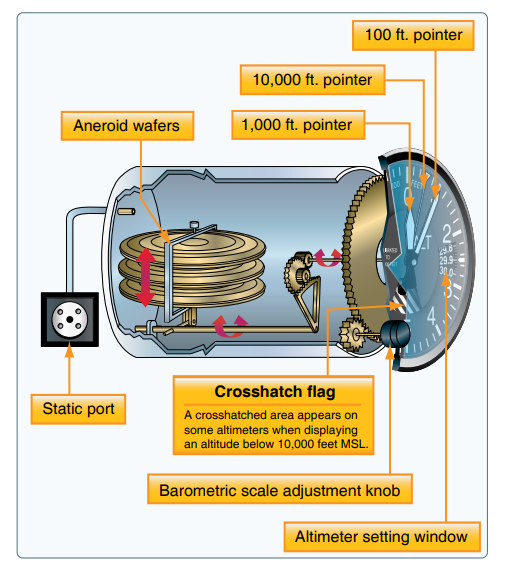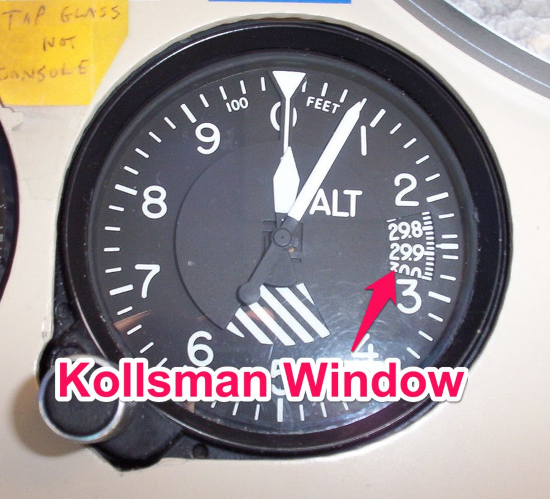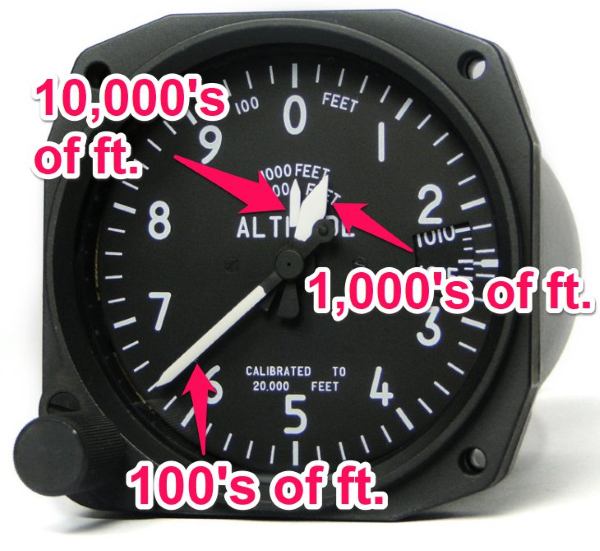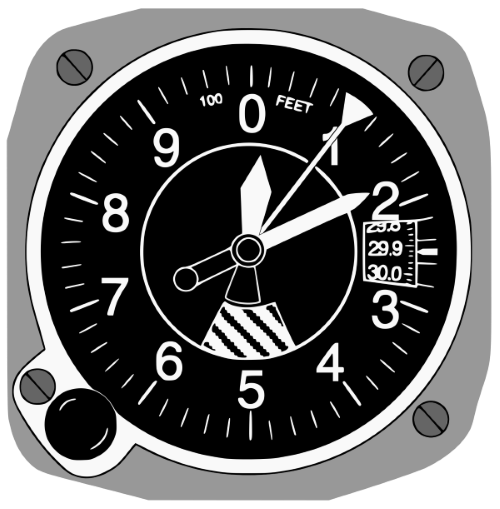The altimeter is only one of many instruments, but it is one of the most important because it tells the pilot how high they are.
But just reading the number indicated doesn’t give the full picture about what’s going on.
Why? Because there are different definitions of altitude, and altimeters must be calibrated correctly to be accurate.
What are the different types of altitudes, and how exactly does an altimeter work?
If there are different ways to interpret altitude, exactly how accurate are altimeters?
These are all fair questions. Keep reading to find out the answers!
Related Article – Visual Approach Slope Indicator (VASI) Explained
#1. What is an Aircraft Altimeter?
Generally, there are two different types of altimeters, the pressure altimeter, and the radar altimeter.
By far the most common type of altimeter is the pressure altimeter, which is based off of an aneroid barometer.
Pressure altimeters measure atmospheric pressure from the static port located outside of the aircraft, and read in terms of height above sea level, or MSL.
Radar altimeters use electromagnetic waves to measure the distance to the ground.
By measuring the time it takes for the signal to make the journey from and back to the radar altimeter, they can give an accurate reading of the height above ground.
#2. 5 Types of Altitude Explained
- Density Altitude – Pressure altitude corrected for non-standard temperature, or how high the plane “feels” it is.
- Indicated Altitude – This is what the altimeter is reading. Accuracy depends on being calibrated correctly.
- True Altitude – The plane’s altitude measured from sea level, or MSL (Mean Sea Level).
- Absolute Altitude – Altitude measured from ground level, or AGL (Above Ground Level).
- Pressure Altitude – This is the height above a standard datum plane (SDP), a theoretical level in which the pressure of the atmosphere is 29.92” of mercury and has a weight of 14.7 psi.
#3. How an Altimeter works

Modern altimeters use a bellows (or aneroid) type design, which is a flexible sealed disk.
The casing of the altimeter is plumbed to the static port outside of the aircraft.
The aneroid responds to changes in case pressure by either expanding, as outside pressure goes down, or contracting, as outside pressure goes up.
The expansion and contraction of the aneroid is captured by gears, which are attached to the needles on the face of the altimeter.
The most important feature of an altimeter, the feature that makes it useful, is the Kollsman window.
This is the set of numbers attached to a small dial on the face of the altimeter.

Because local pressure varies based on temperature and weather, the Kollsman window allows the pilot to calibrate the altimeter to local field conditions, ensuring accuracy.
Local field conditions can be obtained from weather reports from the ASOS/AWOS, ATIS, Air Traffic Control, or the control tower.
If these sources are unavailable, pilots should calibrate the altimeter to a setting in which local field elevation is displayed.
Pressures and temperatures rarely stay the same during a flight, even local ones. Therefore, it is important to periodically calibrate the altimeter.
Flying from a high to a lower pressure area means that the plane is actually lower than indicated.
Conversely, flying from a low pressure area to a higher one means that the plane is higher than indicated.
An old aviation saying that helps pilots remember this is, “From high to low, look out below.”
Temperature also effects pressure, so similar precautions must be taken if temperature varies along a route.
For instance, flying from a higher temperature area to a lower temperature area means that the plane is lower than indicated, and vice versa.
A similar saying exists for temperature, “From hot to cold, look out below.”
Related Article – Choosing A Flight School Near You
#4. How Do You Read an Aircraft Altimeter?
The Kollsman window looks like a smaller version of an automotive odometer, having two pairs of number separated by a decimal.
It is changed by simultaneously pressing and turning the adjustment knob, and the numbers usually go from 28.10” Hg to 30.99” Hg (inches of mercury).
For reading the indicated altitude, there are two or three separate needles that move at different rates around a face that is numbered from 0-9.
The long, thin needle indicates 100’s of feet, so if this needle is touching 8, it is indicating 800 feet. Think minute hand on a clock.
A shorter, fatter needle indicates thousands, so if the needle is at 6, or between 6 and 7, it is indicating 6,000 feet. Think hour hand on a clock.
Combining the two needles, just like a clock, you can gather that the plane is at 6,800ft indicated.

Some altimeters will have an even shorter needle, used to measure multiples of 10k ft.
There are normally four smaller tic marks, five discreet sections between the numbers, used for more accurate readings.
This means there are 20’ per tic mark for the long needle, 200’ per tic for the short needle, and 2,000’ per tic for the shortest needle.
#5. How Accurate are Altimeters?
Altimeters are generally very accurate, hence their widespread adoption.
The accuracy depends on setting the pressure altitude correctly, though, and requires periodic calibration to remain accurate.
However, as with any mechanical device, wear or defects can cause errors in indication.
If, during the pre-flight inspection, the altimeter reads more than 75’ from the surveyed altitude, the altimeter must be removed from service for repair or replacement.
Altimeter errors can also occur if the outside static port is blocked. This will freeze the altimeter at its last indicated altitude.
Conclusion
Altimeters provide critical information to the pilot, indicating how high above MSL the airplane is.
However, altimeter accuracy depends on correct calibration, which is achieved by periodically adjusting the pressure altitude in in the Kollsman window.
Pilots must also understand the differences between altitude measurements, and understand that the indicated altitude is only one of several interpretations.
7,500ft indicated means one thing over the flat land of the Midwest, but something else entirely in Colorado!
Understanding the differences between indicated, true, and absolute altitudes is literally a matter of life and death.
References
https://books.google.com/books?id=0SkDAAAAMBAJ&pg=PA118
https://www.faa.gov/regulations_policies/handbooks_manuals/aviation/phak/media/10_phak_ch8.pdf


